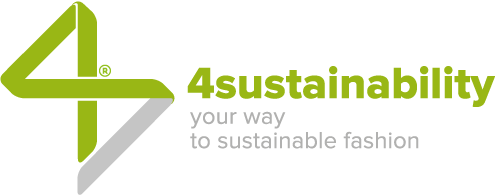In recent years, we have heard a lot about organizational wellbeing and corporate welfare, often in relation to the sustainability strategy (real or presumed) pursued by management. However, do we really know the impact that these concepts have on the functioning of companies and on the community where they operate?
To answer, we should talk to entrepreneurs and workers and ask them what they think.
“There is an implicit aspect to this question that makes the difference”, says Francesca Rulli, CEO and Founder of Process Factory/4sustainability®: “I’m referring to the culture you can breathe in companies on certain issues, starting from the top management. The real challenge lies precisely here, in creating and spreading a corporate culture capable of recognizing the importance that an inclusive, fair and attentive work environment has on the employees’ sense of belonging and their efficiency. Relations with suppliers must also be based on the same logic of correctness and fairness. At the center, always and in any case, there must be the person: talking about sustainability strategy, otherwise, it makes no sense”.
This is a transversal theme that applies to companies in the fashion supply chain and to all private and public organizations, regardless of their sector, size and geographical location. In any case, satisfied and fulfilled workers will be more serene and collaborative citizens.
Everyone has to do their part in this cultural challenge, which isn’t exactly trivial. In Italy, for example, we still suffer a lot from the effects of the contraposition and distance between company management and workers, without really understanding that there must be no prejudices in this game. The ultimate goal is common and unity is always strength. Innovative and far-sighted companies – which are also those who perform better, coincidentally … – have understood this.
To focus on the textile and fashion sector, the business model here is still mostly the traditional one, a legacy of a not too distant past. New generations are called to unhinge this model by orienting the corporate culture and the competition rules to ethics, even more in a district organization such as thatb of fashion in Italy.
The profound changes in the world of work
Recently, we’ve witnessed a truly significant change in the social and economic context.
The family model setting has changed, with greater sharing of roles; the perspective of the work organization has changed, less and less linked to the culture of the so-called permanent job; the perception of the importance of corporate social responsibility has grown; the complexity of the markets has increased as well as the pace of life, bringing out a greater need for reconciliation between work and private life. Furthermore, the new workeforce is increasingly attentive to the qualitative aspects of work, other than to salary.
All this requires us to think of a new work organization characterized by greater flexibility in working hours and spaces, greater collaboration and sharing of objectives, relationships based on trust and empowerment of people, rather than on control.
The concept of remuneration must also be consistently reviewed, in order to consider not only the monetary aspects, but also those of the related benefits and personal fulfillment.
Corporate welfare: beware of abuses
There are only two ways of doing welfare in companies: one that works and one that doesn’t. The difference usually lies in the cultural approach to the project.
Welfare projects that do not work – that no longer work, at least – are usually those decided by the management of companies without a participatory process based on listening, they are those that consider the sphere of services to workers as the only area of intervention, often not adequately communicated and valued within organizations.
The welfare projects that work are those in which the property / management acts as an intellectual sponsor and in which the workers actively and constantly participate; they are those that identify the strategic levers of action in several areas (corporate culture, organization, personal and workplace services, work environment and finance…) and that are adequately communicated and valued.
“The winning projects – Rulli points out – are structured projects: not the spot initiative, not the one-off bonus, but a systemic intervention plan to be carried out over time and measured in order to give it evidence to the market as well as to its own employees.”.
Virtuous examples are not enough
It was 1946 when Adriano Olivetti brought beauty, culture and well-being to his companies, demonstrating that you can do business by taking care of the people who work there, also thinking about their life outside of work – school, health, continuous training … – and, above all, enhancing talents, giving space to individual and group creativity. All this with a surprising return in development and innovation.
It is a well-known example, among other possible ones, to mean that happy experiences of corporate welfare in our country have existed and are still there today. The real challenge, however, is to move from virtuous examples, linked to visionary and enlightened entrepreneurs, to a production system in which organizational well-being is considered a key factor of productivity which is as such managed in a systematic way, with method and vision.
The social dimension of sustainability
The Brundtland Report, also known as Our Common Future, is a document published in 1987 by the World Commission on Environment and Development (WCED) in which the concept of sustainable development is introduced for the first time. “Sustainable development – we read – is development that meets the needs of the present without compromising the ability of future generations to meet their own needs“.
It is clear that, in this sense, sustainability must be understood in its three fundamental dimensions: economic-organizational, environmental and social. Well, the social dimension is considered the most strategic, because without attention to our human capital, in the presence of inequalities and in the absence of social cohesion, economic and environmental sustainability cannot be achieved.
Companies influence their employees, their value chain, customers and local communities and it is therefore crucial that they’re committed to managing these impacts proactively.
Companies can contribute to the design environments and ways of working that stimulate responsibility, belonging and motivation to create increasingly inclusive value chains. They can also collaborate with other companies to team up and therefore have a more consistent positive impact on the community and on the business.
The Consorzio Promozione Filati, which brings together dozens of companies producing knitting yarns, is an excellent example of virtuous approach.
The areas of organizational wellbeing
What are, in practice, the areas in which companies can intervene to introduce or strengthen corporate wellbeing within their organization, in line with the sustainability goals? Let’s see them together.
Culture
By “Culture Area” we mean the deep sphere of the corporate value system. It is the most intangible area and at the same time the most strategic in the company because it inspires and guides the actions of all those who work there. This includes communication policies, social responsibility initiatives, leadership styles, training policies, and the merit system.
Organization
By “Organization Area” we mean that set of rules and processes through which a company carries out its functions and activities. It is an important strategic lever for reconciling private and working life and promoting corporate well-being. This includes smart working policies, flexible hours, part-time policies, holiday and parental leave management policies, and the work shifts management.
Services
By “Service Area” we mean a series of possible initiatives aimed at supporting the worker in the workplace or in their free time. This includes tax and legal assistance services, the delivery of online purchases or clinical examinations at the company headquarters, the handling of paperwork, coaching services, cultural and recreational opportunities, etc.
Finance
By “Finance Area” we mean a financial support system dedicated to people, to support them in particular moments of their life. This includes insurance banking agreements, contributions to the purchase of school books, scholarships for deserving students, meal vouchers in the absence of a canteen service, supplementary policies.
Ambiente di lavoro
By “Environment Area”, finally, we mean the implementation of initiatives aimed at the psychophysical well-being of the worker. This includes attention to the quality of work spaces – welcoming, well-ventilated and well-tempered offices with ergonomic workstations – and the presence of wellness areas such as, for example, relaxation rooms.
People 4sustainability®
Intervening in these areas, according to Francesca Rulli, also means stimulating people’s creativity and aptitude for innovation, which is an essential support to carry on the company’s transformation process towards sustainability: “It is no coincidence that the People 4sustainability® protocol for the growth of organizational well-being is based on the parameters described so far, defining the action plan each company can implement to increase the performance and well-being of resources in a logic of continuous improvement. What are the weaknesses and what are the positive aspects to build on? Do people identify with the company and its management? In what terms do they share its sustainability policies? How to measure and monitor the level of satisfaction over time? Putting people at the center means answering all these questions and then translating the priorities identified into smart solutions that qualify the themes of working together as distinctive aggregation factors”.

